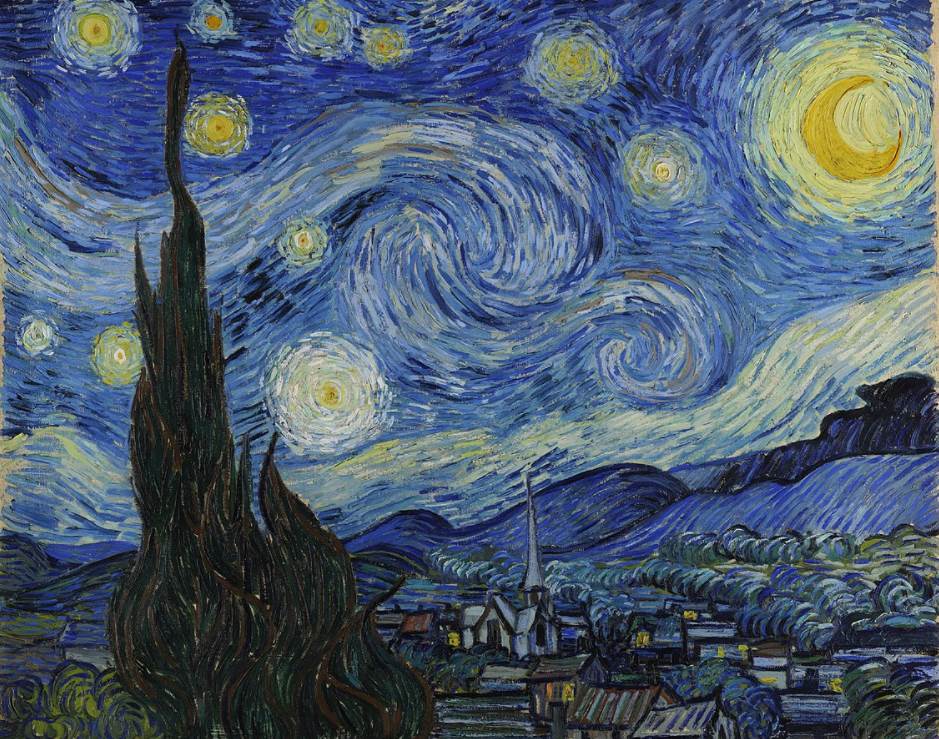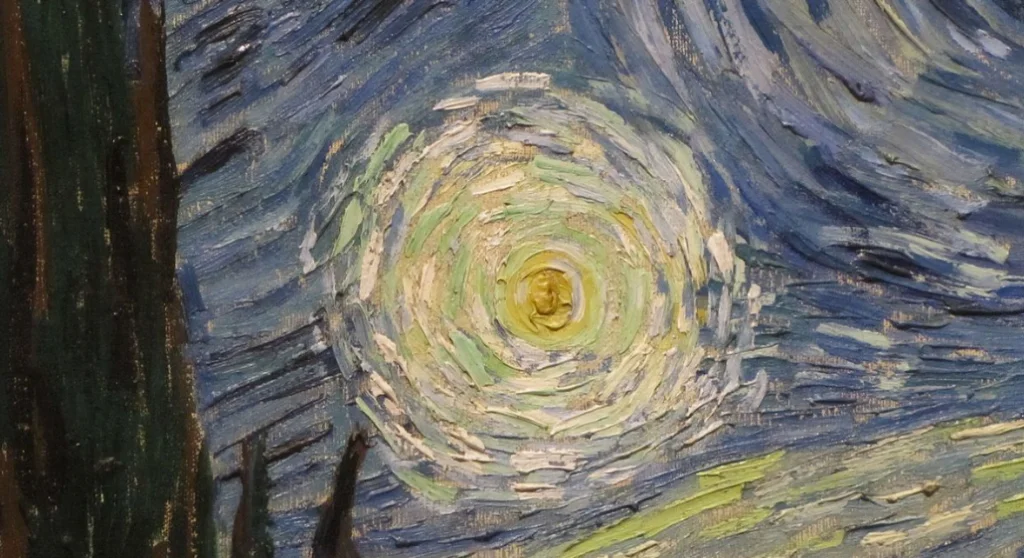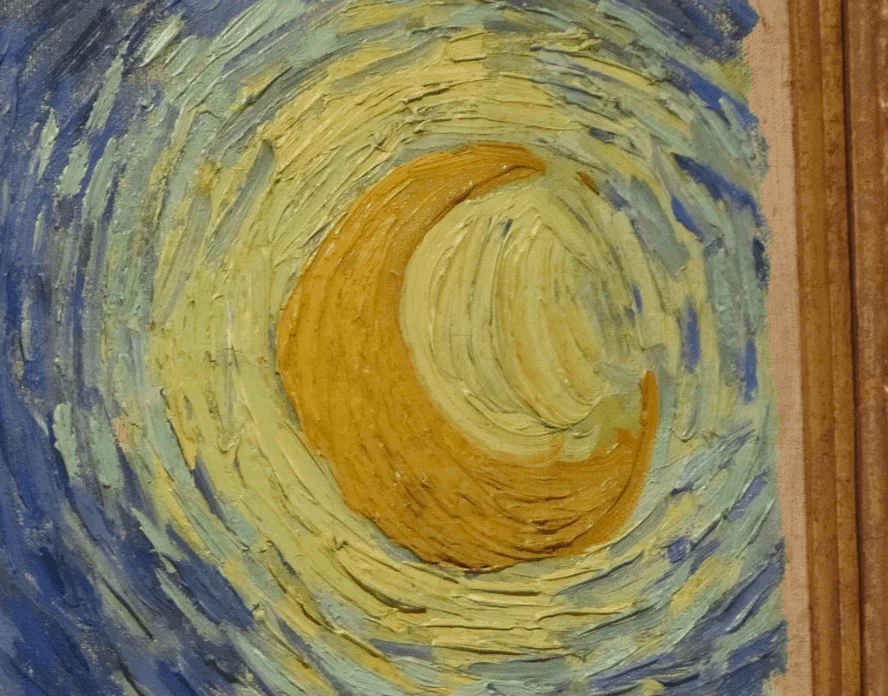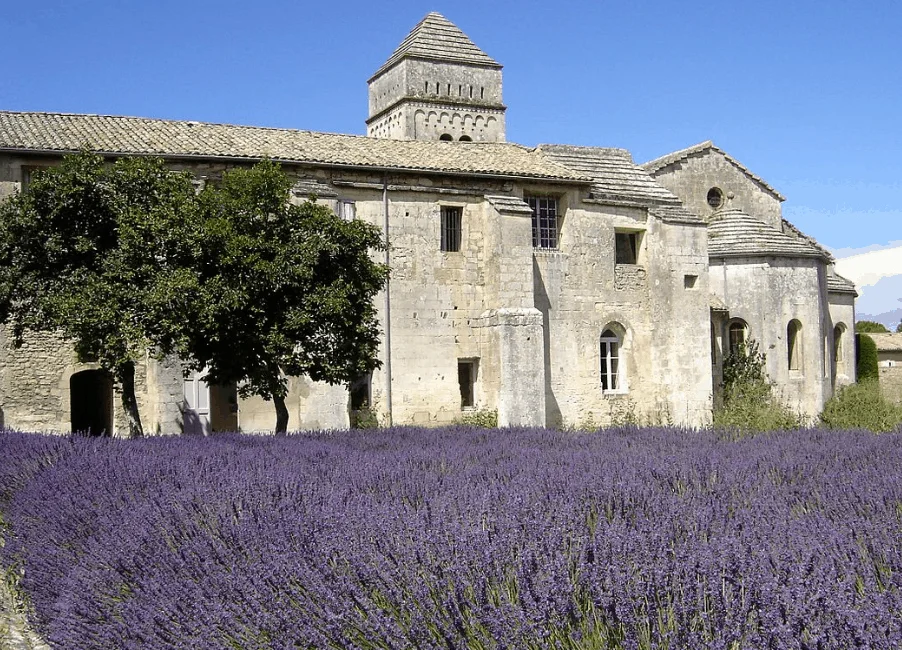Sometimes, a painting isn’t just a painting, it’s a look into the soul of its creator.
Vincent Van Gogh’s masterpiece is one of the most valuable paintings in museums, and in this post, you’ll learn some interesting facts about Starry Night.
1. Starry Night was painted in an asylum.
Vincent Van Gogh had a troubled life. The events that led up to him cutting off part of his own ear (only a small part of his ear lobe though) at the end of 1888 made him decide it was enough. So he checked himself into an asylum called Saint-Paul-de-Mausole.
On May 8, 1889. he voluntarily went to admit himself in this nuthouse that was located in an old monastery in the village of Saint-Rémy-de-Provence in Southern France.

2. What inspired Van Gogh for the painting?
We can find the answer to this question in one of the numerous letters he wrote to his brother Theo. In it he mentions:
“This morning I saw the country from my window a long time before sunrise, with nothing but the morning star, which looked very big.”

3. It wasn’t painted from where he saw it.
One of the most interesting facts about Starry Night is that he didn’t create this Post-Impressionist masterpiece from where he could actually see the view.
In fact, during his one-year stay at the asylum Von Gogh had a bedroom located on the second floor and a painting studio on the first floor where he could paint. It was impossible to get a view from his ground-floor studio.
4. Starry night misses something important.
Van Gogh painted his interpretation of the view from his asylum bedroom window. But something crucial is missing here. It doesn’t depict windows bars, and there’s proof they were there as he wrote this in another letter to his brother:
“Through the iron-barred window. I can see an enclosed square of wheat…above which, in the morning, I watch the sunrise in all its glory.”
5. But that’s not all that’s missing.
At least, when looking out of his bedroom window. It’s been discovered that Van Gogh wouldn’t have been able to see the village of Saint-Rémy-de-Provence from his second-floor bedroom window.
This leaves art historians with an important question. Did he use a sketch he created earlier from the actual village of Saint-Rémy or did he improvise and even used elements from villages in his home country of the Netherlands? As of now, the question remains open.
6. Van Gogh did study the sky though.
A study by Albert Boime has discovered that the sky in the Starry Night painting is a perfect representation of how it actually looked the moment he created the painting.
For this study, they actually recreated the same stretch of the sky at the exact location and the moment Van Gogh wrote to his brother that he had completed the painting at 4 a.m. June 19, 1889.
7. Starry Night wasn’t the first Starry Night
The blue painting I’m discussing in this post is the “official Starry Night,” but Van Gogh actually already painted a similar painting earlier.
It started when he arrived in Arles and became obsessed with capturing the night sky. His first attempt followed in early September 1888 with “Café Terrace at Night,” shortly followed by his second in the Starry Night series called “Starry Night Over the Rhône.”

8. It appears Starry Night references death.
Vincent Van Gogh was clearly losing all control over his life by the time he created Starry Night. he didn’t only lose faith in religion, but he wrote some remarkable things to his brother as well in this period.
In one letter to his brother, he says:
“I need a starry night with cypresses or—perhaps above a field of ripe wheat; there are some really beautiful nights here.”
Cypresses are mostly associated with cemeteries and death. In another letter he wrote:
“Just as we take the train to get to Tarascon or Rouen, we take death to reach a star.”
9. The stars might be references to the afterlife.
At the same time, Van Gogh makes some remarkable mentions of his belief in an afterlife. In a letter he wrote:
“It would be so simple and would account so much for the terrible things in life, which now amaze and wound us so, if life had yet another hemisphere, invisible it is true, but where one lands when one dies. Hope is in the stars.”
While the cypresses he added to The Starry Night potentially reflect death, they also represent immortality and they appear to be reaching into the sky. This probably helps us to understand his quotes about the stars better as well.
10. Van Gogh unknowingly painted Venus.
The same study that recreated the sky at the location and moment Van Gogh painted The Starry Night has confirmed that the planet Venus is indeed included in the painting.
At the time the painting was created, Van Gogh must have considered the bright shining Venus as the “Morning Star” he refers to in his letters.

11. The moon isn’t an exact representation.
Yet another thing the study discovered is that the moon wasn’t in the crescent phase during the period Van Gogh painted Starry Night. Instead, the moon was gibbous at the time, which means it was about 3 quarters full.
One theory presented by Albert Boime is that Van Gogh originally intended to paint the gibbous moon, but changed his mind and gave it a more traditional and recognizable image.

12. Is Starry Night overrated?
Nobody in his right mind would think so. But then again, Vincent Van Gogh definitely did. He actually had something interesting to say about this:
“All in all the only things I consider a little good in it are the Wheatfield, the Mountain, the Orchard, the Olive trees with the blue hills and the Portrait and the Entrance to the quarry, and the rest says nothing to me.”
The main reason he called it a failure is because he felt he painted the stars too big. If we link that with the potential explanation of the painting, his vision of stars representing the afterlife, this remark seems pretty strange to say the least.
13. Starry night is one of the most expensive paintings in the world
Not bad for a painting that the creator deemed a failure, right?
In fact, it’s the second most valuable painting on the list we created. The estimated value is $900 million.
Please note that the list only contains paintings that are on public display in museums, not privately held pieces.
14. The painting had several owners.
Starry, Night, along with nearly a dozen other paintings, was sent to Theo Van Gogh in Paris, the brother of Vincent, on September 28, 1889. But Theo died only 6 months after Vincent committed suicide.
What happened to the painting then is the following:
- After Theo died, Vincent’s widow Jo became the owner.
- Jo sold the painting to poet Julien Leclercq in Paris in 1900.
- He in return sold it to French painter Émile Schuffenecker in 1901.
- Remarkably, Jo bought it back from him shortly after.
- Jo sold Starry Night to the “Oldenzeel Gallery” in Rotterdam in 1906.
- Georgette P. van Stolk of that gallery sold it to art dealer Paul Rosenberg in 1938.
- Paul Rosenberg sold the painting to the Museum of Modern Art in New York in 1941.

15. The MOMA can thank Lillie P. Bliss for acquiring Starry Night.
Lillie P. Bliss was the daughter of a rich industrial who became one of the leading art collectors in New York and was an important figure in the founding of the Museum of Modern Art.
In her will, she left an endowment of her collection to the MOMA. Several of her paintings were sold and with this money, the MOMA was able to acquire Starry Night.
16. Here’s where the work was created.
We want to conclude this list of facts about Starry Night with a picture of where it all happened. The place that Vincent Van Gogh admitted himself to after 6 months of inner turmoil.
This is the place where he would make history, an old monastery that was turned into an asylum for the insane. Here he watched through the window, saw the fields, and most importantly, saw the stars.

